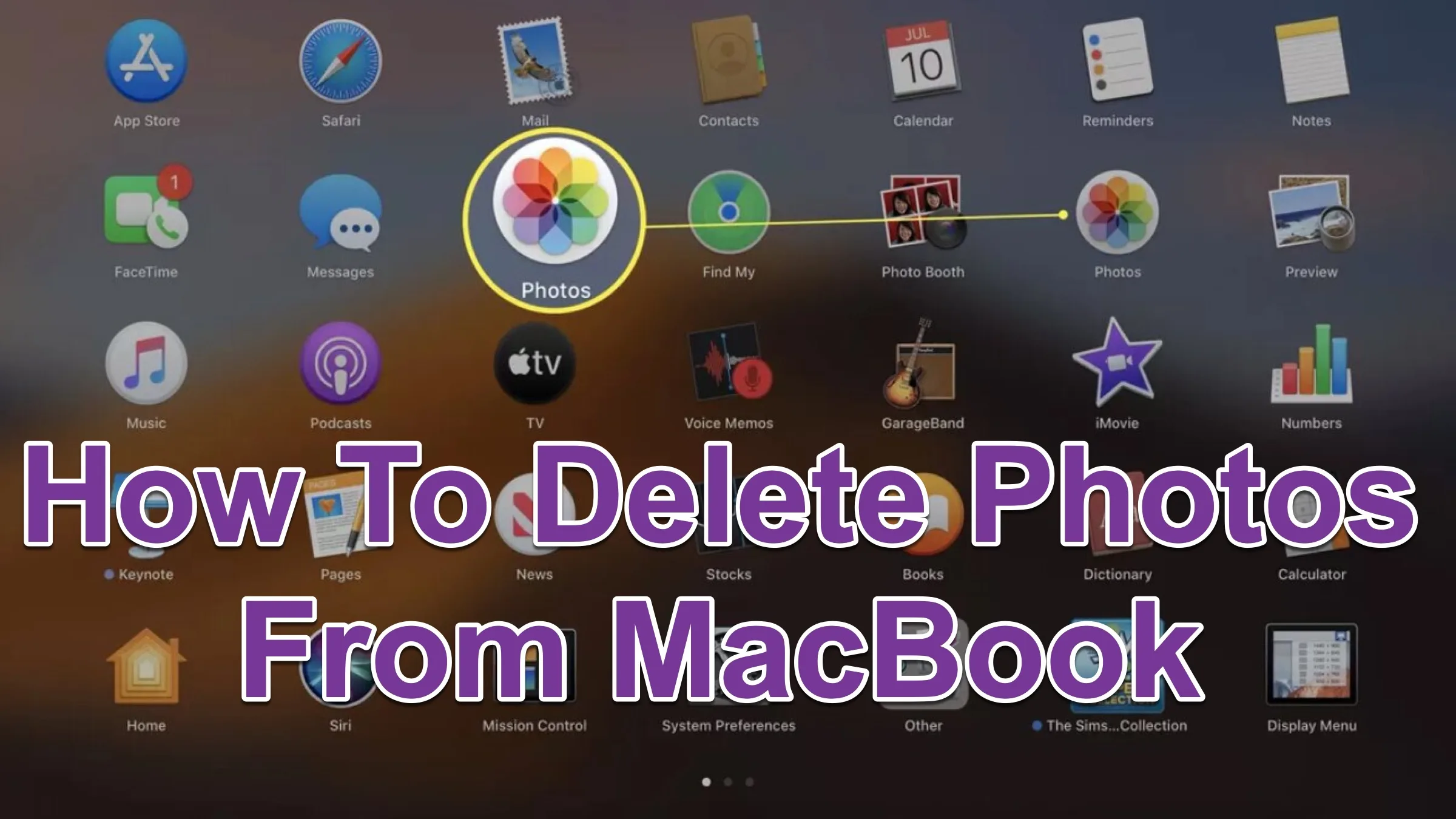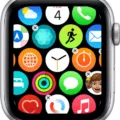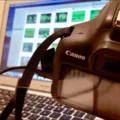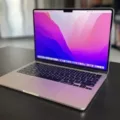Removing photos from a Macbook is a relatively straightforward process, but it’s important to understand the steps involved. Doing so correctly can help prevent any accidental loss of data and ensure that your photos remain safely stored in iCloud.
First, open System Preferences and select the iCloud tab. You should see a checkmark next to Photos. Uncheck this box and you’ll be asked if you want to delete the photos from your Mac. Say yes to proceed.
Next, go to the Apple menu. > System Settings or Apple menu? > System Preferences, then click Apple ID. Choose iCloud, then click Manage. Select Photos, then click Turn Off and Delete. This will delete all photos that were stored in iCloud on your Macbook.
Finally, open the Photos app on your Macbook and select the My Photo Stream album in the sidebar. Then select the photos you want to delete and go to Image in the menu bar > Remove [number] Photos from Album. This will remove them from your computer completely and free up storage space for more photos or other files if needed.
It’s also important to note that you can delete photos from your iPhone but keep them in iCloud by turning off iCloud photo sharing or using a different iCloud account for storage purposes. And if you don’t want to lose those photos entirely, another workaround is to back up the photos before deleting them on your iPhone via different cloud services such as Dropbox or Google Drive.
Removing photos from a Macbook is straightforward once you understand how it works but it’s important to take these steps carefully so that no data is lost or accidentally deleted in the process!

Deleting Photos From Mac But Not iCloud
To delete all photos from your Mac but not iCloud, first open System Preferences and select the iCloud tab. In the tab, you’ll see a checkmark next to Photos. Click on the checkmark to uncheck it and you’ll be asked if you want to delete the photos from your Mac. Select ‘Yes’ to delete all of the photos stored on your Mac without deleting them from iCloud. If you later decide to add them back onto your Mac, simply click the checkmark next to Photos again in System Preferences and they will be synced back down from iCloud.
Removing iCloud Photos from a Mac
To remove iCloud photos from your Mac, first open System Preferences or System Settings. Click on the Apple ID tab, select iCloud, then click Manage. Select Photos, then click Turn Off and Delete to disable the feature and delete all associated photos from your Mac. Please note that this will not delete the photos from iCloud itself; they will remain available to access with other devices that are connected to your iCloud account.
Removing Photos from a Macbook
To remove photos from your Macbook, open the Photos app. In the sidebar, select the My Photo Stream album. Select the photos you would like to delete and go to Image in the menu bar. Select Remove [number] Photos from Album. This will remove your selected photos from your Macbook.
Deleting Photos From Mac But Keeping Them on iPhone
To delete photos from your Mac but keep them on your iPhone, you can do the following:
1. Open Photos on your Mac and select the photos you want to delete.
2. Click the share button in the top-right corner of the Photos window and select iCloud Photo Sharing from the options that appear.
3. Select the photos you want to keep on your iPhone, then click “Share.” This will make a copy of the photos available in iCloud Photo Sharing, which will sync with your iPhone’s Photos library.
4. Delete the original copies of the photos from your Mac by selecting them and pressing Command + Delete or right-clicking and selecting “Move to Trash.”
5. The photos you kept in iCloud Photo Sharing should still be accessible on your iPhone.
Deleting Everything From a Mac Without Deleting From iCloud
To delete everything from your Mac without deleting it from iCloud, you’ll need to first disable iCloud Drive. To do this, open System Preferences and select the iCloud pane. Uncheck the box next to iCloud Drive, then click “Turn Off” when prompted. This will remove all files stored on your Mac while leaving them intact in iCloud. You can also drag files from the Finder window into the Trash, but remember that they will still be stored in iCloud. Once you’ve disabled iCloud Drive and deleted any desired files, you can empty the Trash to permanently delete them from your Mac.
Does Deleting a File From a Mac Also Delete It From iCloud?
When you delete a file from your Mac computer, it will also be deleted from iCloud the next time your system syncs. This is a normal part of the synchronization process and is designed to ensure that both devices have the same files stored. However, this deletion is not permanent and most cloud storage systems provide an option to restore a deleted file within 30 days. To do this, you would need to access your cloud storage account, navigate to the ‘Deleted Files’ section and select the file that you would like to restore. Once selected, you will be able to restore the file back to its original folder or create a new folder for it. It’s important to note that if the deleted file was stored in an iCloud-specific folder, such as ‘iCloud Drive’ or ‘iCloud Photos’, then restoring it may require special steps.
Moving Photos from Mac to iCloud to Free Up Space
To move photos from your Mac to iCloud to free up space, you need to first enable iCloud Photos on your Mac. To do this, open the System Preferences app and select iCloud. Then click the Options button next to the Photos tab and make sure iCloud Photos is checked.
Once you have enabled iCloud Photos, you can select which photos and videos you want to upload to iCloud by opening the Photos app and selecting the items you want to upload. Once they’re selected, click the Share button in the top right corner and select Add to My Photo Stream or Upload to My Photo Stream. This will upload them to your iCloud storage.
You also have the option of using iTunes File Sharing or AirDrop if you prefer a more direct transfer method. To do this, open iTunes on your Mac, connect your iPhone or iPad, select iTunes, and then click Apps in the sidebar. Scroll down until you find File Sharing and select Photos from the list of apps that appear below it. You can then drag and drop photos into the Documents folder of that app in order for them to be transferred over directly from your Mac.
If you’re using AirDrop instead, simply open Finder on your Mac, find AirDrop in the sidebar and drag and drop photos from there directly onto your device’s screen in order for them to be transferred over wirelessly.
Once you’ve moved your photos over to iCloud storage or onto your device via iTunes File Sharing or AirDrop, they’ll no longer take up valuable space on your Mac’s hard drive, freeing up space for other uses!
Where Are Photos Stored on a Mac?
Photos on Mac are stored in the Photos app (formerly known as iPhoto). By default, your photos will be stored in the System Photo Library within the Pictures folder on your Mac. You can also create additional photo libraries on other storage devices, such as external hard drives or USB flash drives. To access photos in a Photos library, you should always use the Photos app. You can also store photos outside of the Photos app by saving them to any other folder on your Mac.
Consequences of Deleting Photo Library From Mac
Deleting the photo library from your Mac will completely remove the library from your computer and will free up drive space. All photos in that library will be permanently deleted and cannot be recovered. Additionally, any photos stored in iCloud from that library will also be removed and cannot be restored. It is important to ensure that any photos you wish to keep are backed up everywhere before deleting the photo library.
Does Deleting Photos From Mac Affect Photos on iPhone?
Yes, deleting photos from your Mac will delete them from your iPhone. When you use iCloud Photos, deleting a photo or video on one device will delete it from all other devices where you’re signed in with the same Apple ID. You can easily delete photos and videos in iCloud Photos: on your Mac, open the Photos app and select the photos or videos you want to delete. Then click the Delete button in the top-right corner of the window. On your iPhone or iPad, open the Photos app and tap Select at the top-right corner of the screen. Select all of the photos that you want to delete and then tap Delete in the bottom-right corner of the screen to confirm. Once deleted, these photos will no longer be available on any device connected to your Apple ID.
Conclusion
In conclusion, it is possible to remove photos from Macbook with a few simple steps. First, you must open System Preferences and uncheck the iCloud tab. You will then be asked if you want to delete the photos from your Mac; say yes. Next, you can go to Apple ID, select iCloud, click Manage, select Photos, and turn off and delete. Lastly, open the Photos app and choose the photos you want to remove. Once selected, go to Image in the menu bar and select Remove [number] Photos from Album. With these steps, you can easily remove photos from your Macbook without any hassle.








